Last updated on February 16th, 2025 at 03:22 pm
Sod and Lawn tips for the Southwest. Everyone wants a perfect looking lawn including myself. Here are my tips for making folks say “Wow look at that lawn”!
Seed or Sod?
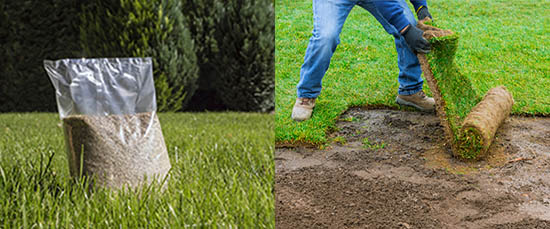
Seeds are less expensive but not all the seeds will germinate, birds will peck away at the seeds and if not properly planted the wind will scatter them all over. It’s important to have good loamy loose soil when you spread your seeds around. Always use a broadcast spreader to spread out your seeds evenly. Most lawn seeds will germinate in about 2 weeks or so. Water daily and sometimes twice per day if you are seeding during the hot summer months.
Sod will cost more but it is instant gratification. You will have to hire a lawn landscaper to help move and lay it in your area. When laying down sod or seed wait at least 2-3 weeks before fertilizing. In the southwest, we get lots of hot dry summer months. Water is essential for a spectacular green lawn. Installing low-water grasses is best if you are looking for a good low maintenance lawn.
Low water Grasses for the Southwest
Low-water grasses for lawns are Bermuda Varieties. If you want to use seeds for a lawn try the Sahara seeds as they germinate fast and tolerate poor soils. It’s important to note that Bermuda seeds or sod do not like shady conditions.
Common Bermuda grass (Cynodon dactylon) grows long runners that will become an invasive species, especially in regions where there is lots of rainfall. It will grow underneath iron borders and will grow into your gardening beds.
The hybrid varieties are not as invasive and grow tighter and tend to last longer into the fall seasons. More about these Bermuda hybrid types is below this post.
Buffalo grass is another low-water grass. However, it does tend to grow in clumps which makes it hard if you are looking for a smooth lawn during the growing seasons.
After the installation of the sod
Make sure to flatten your sod down. Use a lawn roller to flatten any bumpy areas. Do not overdo this procedure. An overpacked lawn will harden the surface thus making it harder for the grass to take in water and nutrients.

Cool Seasonal Grasses
Fescue is a cool-season grass and needs more water than warm-season grass. Fescue grass should be fertilized once or twice more during the winter months.
How much water does one need for their Fescue lawn? This is the most challenging question to answer. For cool-season grasses such as fescue, rye, and bluegrass it’s about 3″ of water evenly distributed per week. Typically, about every other day 20-30 minutes on a good sprinkler system.
Use a good all-purpose lawn fertilizer, an analysis of about 16-8-8 will work great, or use any good lawn Fertilizer. You can also purchase Helena’s 16-8-8 at Color Your World Garden Centers.
Scott’s Turf Builder is another good fertilizer for any lawn. The problem most people face is not doing the work. Most will purchase lawn fertilizer use it once and forget about it for the rest of the year. In and around the Southwest you should fertilize your lawn at least once per month starting in late March and ending in October.
Cool-season grasses do not mind shady areas. The top two kinds of grass to use are Fescue and Kentucky bluegrass. These types of grasses will do well underneath shade trees or on the north side of taller walls. They can also tolerate full sun but in the southwest, you will need water more often. Every other day about 20-30 minutes on a timed sprinkler system during the mid-hot summer.

Watering Warm Season Grasses
For warm-season grass such as St. Augustine grass, Zoysiagrass, Bermuda, or hybrid Bermuda, you should water about 2″ to 2 1/2″ of water about 2-3 times per week. This is during the hottest time of the year, usually June, July, and August. About 1-2 times during the spring and fall seasons.
Most lawns throughout the southwest will typically need less watering during the cooler months of the year, so please water responsibly. For established warm-season lawns, you can turn off your watering system in late November. Turn it back on in early March.
It is not how long you leave your watering system on but how much water you actually apply to your lawn. This means more water for a shorter time is more beneficial than a long period of time with less water.
You should fertilize your sod/lawn once in the spring, once in the summer, and once just before winter. For a thicker greener healthier lawn I recommend fertilizing once per month starting in late March and ending in October.
Common Bermuda image below. It can get invasive, especially in regions where there is lots of rainfall. Hybrids like Tifway and Tifgreen are not as invasive.

Mowing your lawn
The blades of your lawnmower should be sharp. Dull blades will hack away at grass blades making them look brownish at the tip of the grass blades. Uneven cuts will make the grass blades harder to take in water and fertilizer. Always sharpen your blades at the beginning of the spring season it will help make your lawn look better than your neighbors.
Remove weeds from the lawn
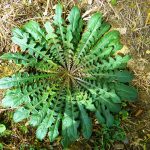
Use Fertilome “Weed-Out Plus”. This Kills Dandelions, Clover, Crabgrass, Nutsedge, Chickweed, Spurge, and many other Lawn Weeds. Ask for it at your friendly local nursery. It really does work! Weeds will also suck up the water that your grass needs.
Learn more about “How to get rid of weeds” from your landscape lawn area.
Where to place Bermuda Grass?
Remember, Bermuda sod or grass will go into dormancy during the winter months. It likes FULL SUN. Therefore less water and maintenance. It will have a hard time growing underneath a large tree or on the northern side of tall buildings or walls.
Placing it on the north, or east exposure of rock walls, homes, or other thick taller hedges and Bermuda grass will have a tough time growing.
Bermuda sod, zoysia, and buffalo grasses do well in the southwestern areas. So does tall Fescue but it needs more watering and maintenance.
Where to place Fescue
Fescue Sod will stay green year-round but needs more watering and maintenance. This type of sod/grass can tolerate shade and it will work great underneath a large shade tree. You can also place it where there is lots of shade, but it does best with some early morning sun and afternoon shade.
It will cost more than most other varieties of Bermuda seed or sod. Fescue will not re-grow itself. If it dies on one spot it will look bare unless you re-sod or re-seed.
There are other types of sod that can be bought at Color Your World Garden Centers. If you live in the Las Cruces area, give us a call at (575) 521-0496
Hybrid Bermuda grasses have many uses and are what most folks use throughout the southwest. Below are varieties and descriptions.
Bermuda-Tifton – Lawns-Commercial-Fields – Coarse & blends with common Bermuda
Bermuda-Tifgreen – Lawns-Commercial-Putting Greens – Blades are fine, low growing
Bermuda Tifway – Lawns-Commercial-Fairways – Medium Blades
Bermuda Santa Ana – Lawns-Commercial-Fields – Medium Blades
Fescue Advantage – Lawns-Commercial – Tolerates shade – Medium Blades
Bermuda Overseeded – Lawns-Commercial – Medium to fine Blades
NOTE; All sod is ordered from Santa Teresa Sod Farm. We do not have Sod at our Local Stores.
Note; Not all these types of Bermuda grass will be available throughout the year.
Need to know how much sod is in your landscape area? Go Here To calculate sod measurements.
Why is your neighbor’s lawn looking better than yours year after year? Because he probably uses a lawn winterizer. Winterizer works on root development which will, in turn, make your lawn much thicker and greener when springtime comes around. Late fall and winter are the best times to apply winterizer try it today.
Sod and Lawn Tips
Got questions? Let us know by commenting below.

Greenhouse Manager, Master Gardener, and Webmaster.
If you have any questions or enjoyed this post, feel free to share your thoughts in the comments below.

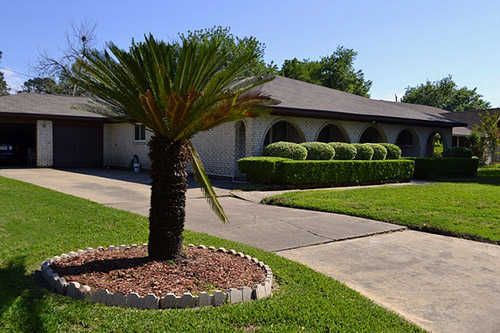
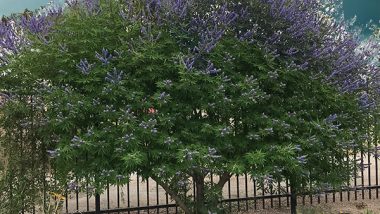
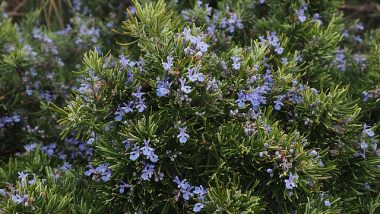
My Bermuda lawn is still dormant (end of April). When will it start to grow?
Your Bermuda should start seeing signs of green at the end of April. But it will not really start to grow and look much healthier until temperatures at night time are consistently above 50 degrees f.
You should be watering about every other day 15-20 minutes on a sprinkler system. Use a good lawn fertilizer right now. An analysis of 16-8-8 will work great.
Thanks for your comment Erda.
Do you have tiff sod? Price please
We do not have Tiff green sod at our stores. However, you can call us and we can order if it is available at the sod farm. The sod farm is located in Santa Teresa, NM. Thanks for commenting. When you call ask for current Tiff green sod price.
Paul
I live in Cruces and have never been successful growing a winter lawn. I used to have one every winter in Phx. Any suggestions? I also have two dogs, along with a doggie door, so toxic fertilizers are not an option. Your feedback would be greatly appreciated.
Thanks!
Hello, Claire, growing a winter lawn is a bit of a challenge. In the Phoneix area it never freezes but around these parts (southwest New Mexico) it does freeze. Your best bet is to use Fescue sod or seed. This type of grass will tolerate the hot mid-summer heat and will do ok during the winter months.
Dr. Earth Lawn fertilizer is a good alternative to “toxic” fertilizers.
Join Our Free Newsletter
Thanks for the tips on how to take care of sod, they were very helpful for a beginner like me. I had no idea that over-packing the lawn was such a big deal and could kill the sod, I thought you wanted to pack it tight. My neighbor is putting in sod this next weekend and I am helping, I will be sure to share these tips.
It is mid-November here in Cruces. I have a hybrid Bermuda grass and want to know how often and for how long on each sprinkler station to water between now and through March?
Also, read about your ‘Winterizing’ of grass. Have had BAD weed issues the past couple of years in my grass. Will this ‘winterizing’ help with that come spring and what is ‘winterizing’ and is it harmful to dogs that love to lie in the lawn – all seasons?
Last year half of my back yard developed goat heads. My backyard is grass. I. Dug up quite a few but they got out of hand. What can I do to to try and eradicate them this year?
Goatheads are a big problem around the southwest. They are also called puncture vine because they will puncture almost anything including car tires.
The seed is actually the Goathead itself as it will fall off and begin growing another weed. You must remove these weeds from your lawn or they will take over the lawn. Read more about this weed here. How To Get rid of weeds. The part about Goatheads is towards the bottom of the post.
Paul